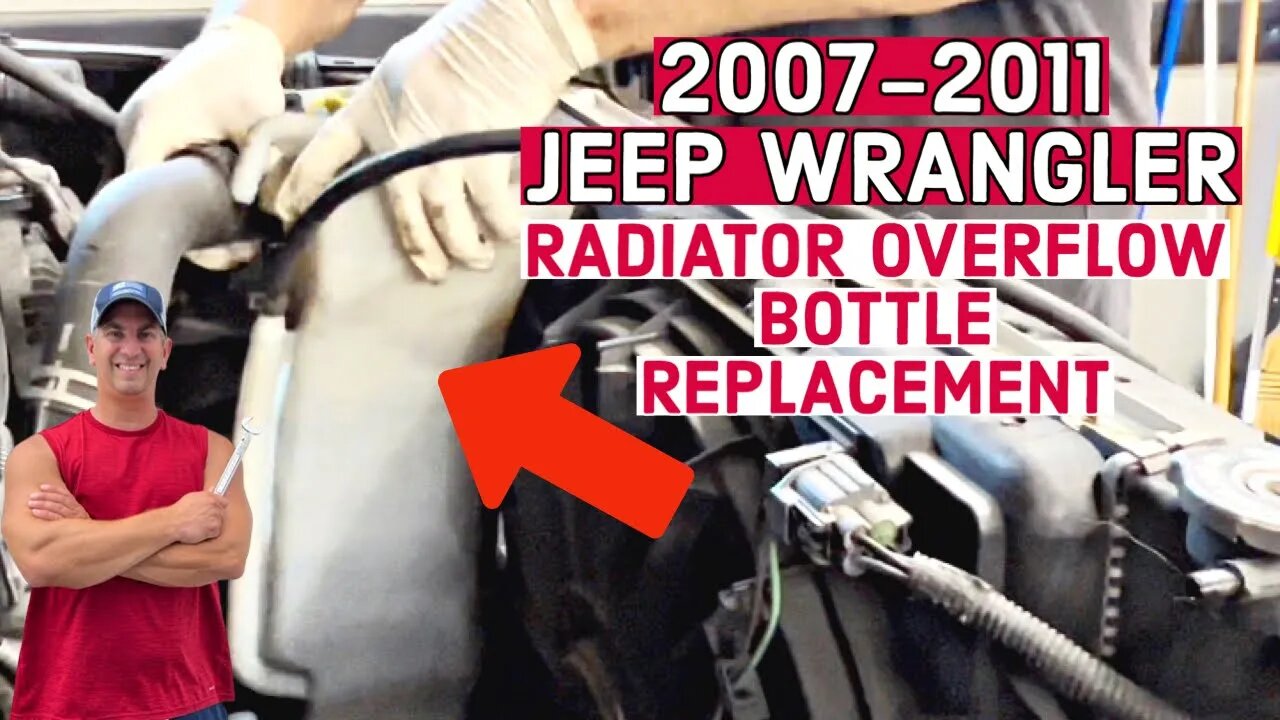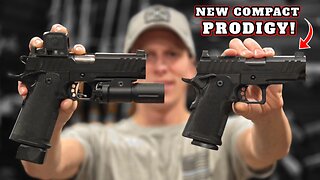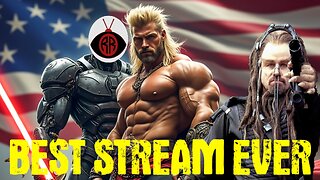Premium Only Content

How To Replace Your Jeep Wrangler's Radiator Overflow Reservoir In Under 5 Minutes
This video will show you How To Replace The Upper And Lower Radiator Hoses On A Jeep Wrangler
🔧Buy Jeep Radiator Overflow Tank: https://amzn.to/3PR6h07
🔧Buy Antifreeze: https://amzn.to/3ZiBlKp
The Jeep Wrangler's radiator overflow tank, also known as the coolant reservoir or expansion tank, is a crucial component of the vehicle's cooling system. Its primary function is to provide a space for excess coolant to expand into when the engine heats up, and to collect coolant that may be expelled due to pressure build-up.
Here are some key points about the radiator overflow tank in a Jeep Wrangler:
1. **Location**: In most Jeep Wranglers, the radiator overflow tank is located near the radiator itself, typically on the driver's side of the engine bay. It's a translucent plastic tank with markings indicating the minimum and maximum levels for coolant.
2. **Function**: The overflow tank serves as a reservoir for excess coolant. When the engine heats up and the coolant expands, it flows into the overflow tank. Conversely, when the engine cools down, it draws coolant back from the tank to maintain the proper level in the radiator.
3. **Coolant Level**: It's important to regularly check the level of coolant in the overflow tank. This should be done when the engine is cold. The coolant level should be between the "MIN" and "MAX" markings on the side of the tank.
4. **Maintenance**: Over time, the coolant in the overflow tank can become contaminated or lose its effectiveness. It's recommended to periodically inspect the coolant and replace it if necessary. Additionally, check for any signs of leaks around the tank or its connections.
5. **Pressure Cap**: The radiator cap, which may also be referred to as the pressure cap, is located on the radiator itself. It's responsible for maintaining the correct pressure in the cooling system. When the pressure exceeds a certain level, it allows excess coolant to flow into the overflow tank.
6. **Coolant Type**: It's important to use the correct type of coolant for your Jeep Wrangler. Different models may require different types of coolant (e.g., ethylene glycol-based or propylene glycol-based) and it's essential to use the one specified in the owner's manual.
7. **Coolant Temperature**: If the coolant in the overflow tank is constantly low, it may indicate a leak in the system. It's crucial to address any leaks promptly to prevent engine overheating and damage.
8. **Warning Signs**: Keep an eye out for warning signs such as overheating, low coolant level, or coolant leaks. These could be indicative of a problem with the cooling system, which should be addressed as soon as possible.
If you suspect any issues with the radiator overflow tank or the cooling system in your Jeep Wrangler, it's advisable to consult a qualified mechanic or refer to the vehicle's manual for specific troubleshooting and maintenance instructions.
#jeep #jeepwrangler #radiator
Our videos are for entertainment purposes only. It is recommended that you seek advice or help from a qualified professional while attempting any and all repairs.
Do-it-yourself repairs can involve risk and injury, we assume no responsibility or liability for losses, damages, or injuries that include but are not limited to direct, indirect, special, incidental, actual, consequential, or punitive. All repairs performed by our viewers are at your own risk.
While we do review products that we use daily or have even used for years, we also review and test products for companies that have compensated us to try their product out. We are independently owned, the opinions expressed are our own from personal experience while using any and all products.
We are a participant in the Amazon Services LLC Associates Program, an affiliate advertising program designed to provide a means for us to earn fees by linking to Amazon.com and affiliated sites. Recommended products with links may be commission-based when products are purchased from them.
-
 7:35
7:35
Tactical Advisor
1 day agoNEW Springfield Prodigy Compact (FIRST LOOK)
1.27K1 -
 16:45
16:45
IsaacButterfield
1 day ago $0.25 earnedWoke TikToks Are DESTROYING The World
2.16K11 -
 1:09:27
1:09:27
State of the Second Podcast
13 hours agoThis is Why We Don’t Trust Politicians (ft. @stones2ndsense)
8931 -
 10:19
10:19
Chrissy Clark
10 hours agoCNN’s BILLION Dollar Defamation Trial
1.18K -
 1:00:27
1:00:27
Trumpet Daily
17 hours ago $3.41 earnedCongress Humiliates Itself - Trumpet Daily | Jan. 15, 2025
4.08K10 -
 1:49:46
1:49:46
Glenn Greenwald
1 day agoTrump Fosters A Peace Deal With Israel & Gaza; Trump's Pressure On Israel Embarrasses His Enemies & Provides Foreign Policy Clues; Rubio & Hegseth On War And Militarism | SYSTEM UPDATE #389
89.9K161 -
 1:28:46
1:28:46
Donald Trump Jr.
17 hours agoOut of this World: Breaking News Investigation on Secret Alien Aircrafts, Live with Ross Coulthart & Lue Elizondo | TRIGGERED Ep.207
305K448 -
 1:39:31
1:39:31
Space Ice
13 hours agoSpace Ice & Redeye: Battlefield Earth & Rob Schneider
71.6K6 -
 1:33:38
1:33:38
Flyover Conservatives
1 day agoAMANDA GRACE | Prophetic Warnings Ignored: What Happens When Leaders Defy God | FOC Show
58.7K18 -
 59:57
59:57
The StoneZONE with Roger Stone
11 hours agoMEDICAL MURDER: A Sneak Peak into the Making of Died Suddenly 2 | The StoneZONE w/ Roger Stone
49.5K11